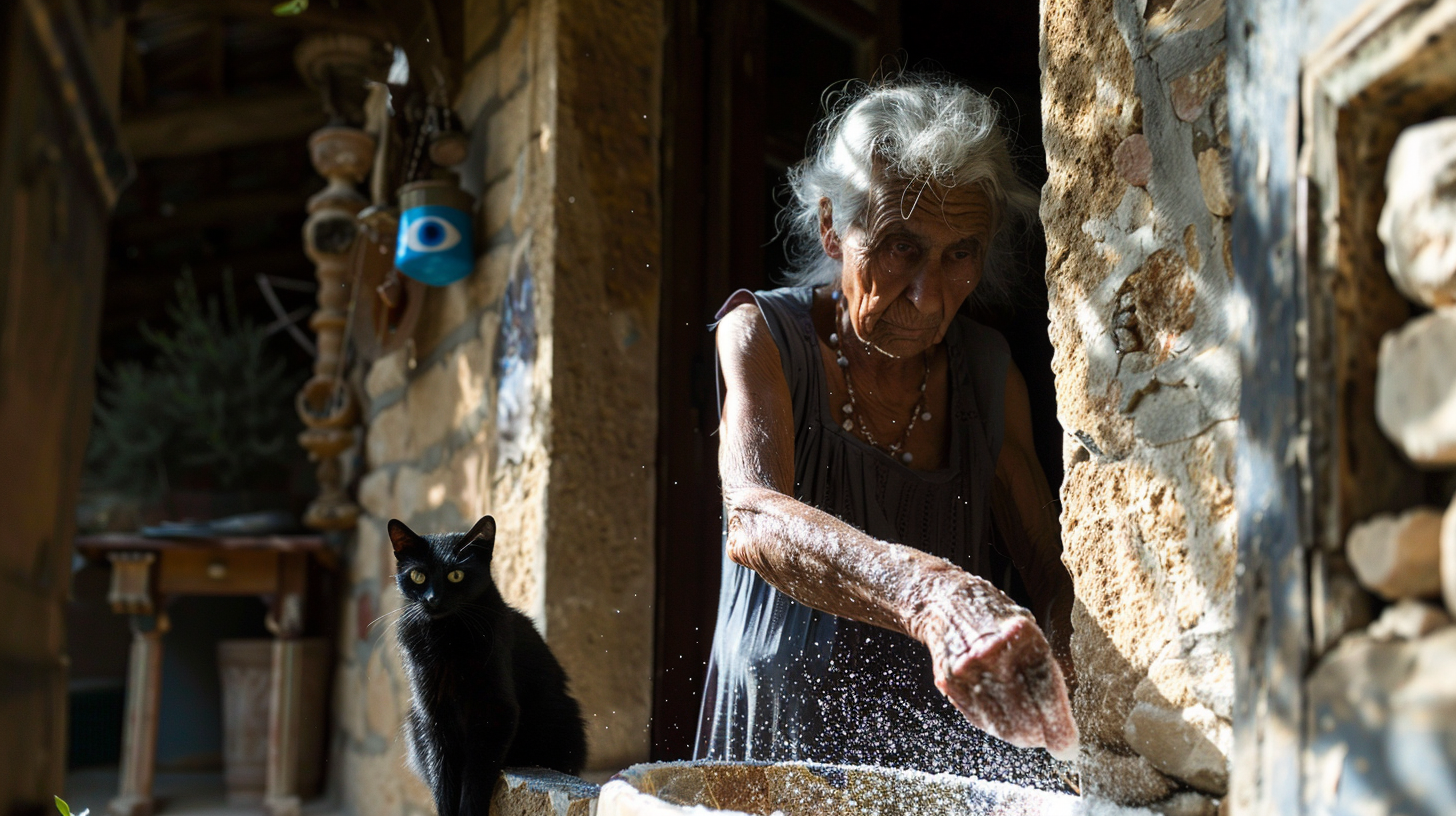Ancient beliefs run deep in Crete, the largest Greek island, where generations-old superstitions continue to influence modern life. From protective blue eye charms to Christmas goblins, these supernatural traditions have survived millennia of cultural changes. While some might dismiss these practices as simple folklore, they remain an essential part of Cretan identity, deeply woven into daily routines and social customs. These 7 enduring Greek superstitions offer a fascinating glimpse into how traditional beliefs and modern life seamlessly merge in Cretan culture.
1. The Evil Eye (Mati): Protection Against Unwanted Attention
The Evil Eye, or mati, stands as one of Crete’s most powerful and enduring beliefs. This ancient superstition manifests throughout the island in the form of distinctive blue eye symbols, which you’ll find everywhere from shop windows to rearview mirrors and even baby carriages.
Local Cretans take the mati seriously, believing that excessive praise or attention can trigger its negative effects. When someone falls unexpectedly ill or experiences a string of bad luck, locals often attribute it to being “matiasmenos” – affected by the Evil Eye. While the Greek Orthodox Church officially considers the mati at odds with Christianity, many within the church acknowledge the concept of negative energy circulating among people.
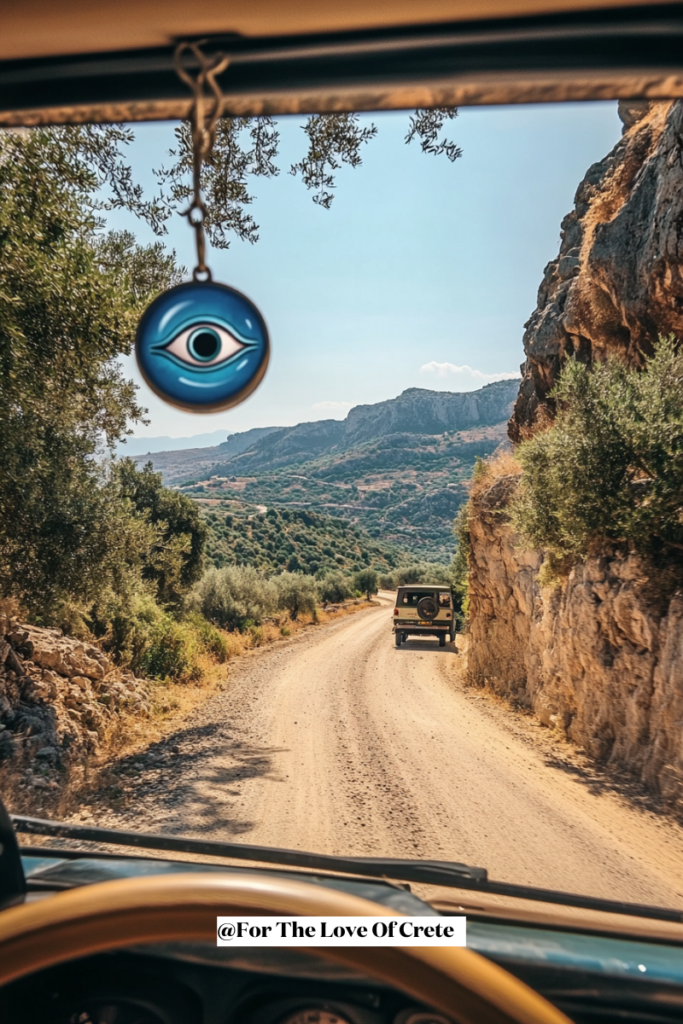
The traditional cure, known as xematiasma, requires someone skilled in the ritual to perform a specific ceremony using oil, water, and sometimes salt. During the ritual, oil drops are placed in water – if they stay on the surface, no Evil Eye is present, but if they dissolve or sink, it confirms the Evil Eye’s influence. This diagnostic and healing practice has maintained its credibility across generations of Cretan families.
2. The Power of “Ftou Ftou Ftou”
The seemingly simple act of symbolic spitting plays a crucial role in Greek protective customs, with particularly strong observance in Crete. This practice involves making a spitting sound – “ftou ftou ftou” – while turning the head slightly to the side, though no actual spitting occurs.
The tradition emerges in numerous important occasions, particularly when compliments or admiration are expressed. Common instances include:
- During baptism ceremonies
- At wedding celebrations
- When grandparents praise their grandchildren
- Any time significant compliments are given

The triple repetition holds deep religious significance, specifically representing the Holy Trinity – Father, Son, and Holy Spirit. The Greek Orthodox Church recognizes this practice, and despite modern education and changing times, it persists across all generations of Greek society, from elderly villagers to young urban professionals. Studies show that 66% of Greeks believe in the evil eye and related protective practices.
3. Garlic: Guardian Against Evil Forces
Like many Greek traditions that are strongly upheld in Crete, the practice of using garlic for protection has deep historical roots throughout the Mediterranean. The tradition of hanging garlic dates back to ancient times, with archaeological evidence at Crete’s Palace of Knossos showing its presence between 1850-1400 BC.
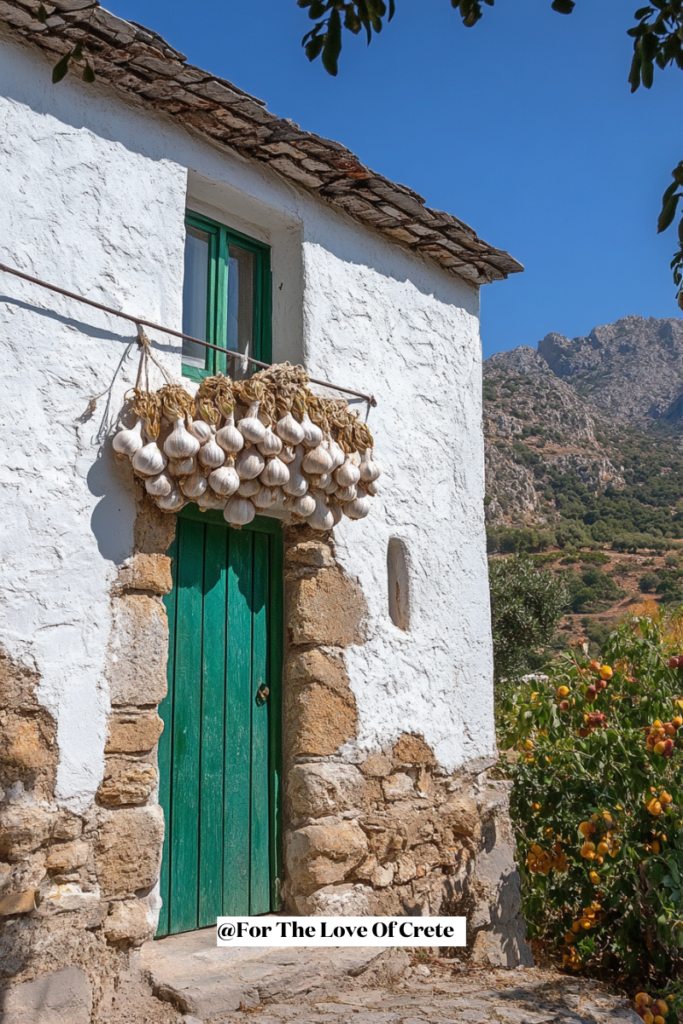
Ancient Greeks valued garlic highly, offering it as gifts to their gods and using it before battles and Olympic competitions. The Egyptians also used it extensively for both medicinal and spiritual protection. Today, modern Greeks, particularly in Crete, maintain this protective practice with remarkable dedication. Braided garlic clusters hang above doorways, while some locals carry single cloves in their pockets for personal protection. More committed homeowners even incorporate garlic bulbs into wall cavities during construction.
This ancient practice has scientific backing – garlic’s natural antimicrobial properties are well-documented. The tradition’s survival for over 3,000 years demonstrates its deep cultural significance, creating a living link between contemporary Greeks and their ancestors. Whether in family homes or local tavernas, these protective garlic braids maintain their watchful presence, just as they have since ancient times.
4. Tuesday the 13th: Crete’s Dreaded Day
Unlike Western fears of Friday the 13th, Cretans hold a deep-rooted wariness of Tuesday the 13th. This distinctive superstition connects to the day’s association with Ares (Mars), the ancient god of war. In Greek, Tuesday is called “Triti,” and its links to this fierce deity only strengthen its ominous reputation.
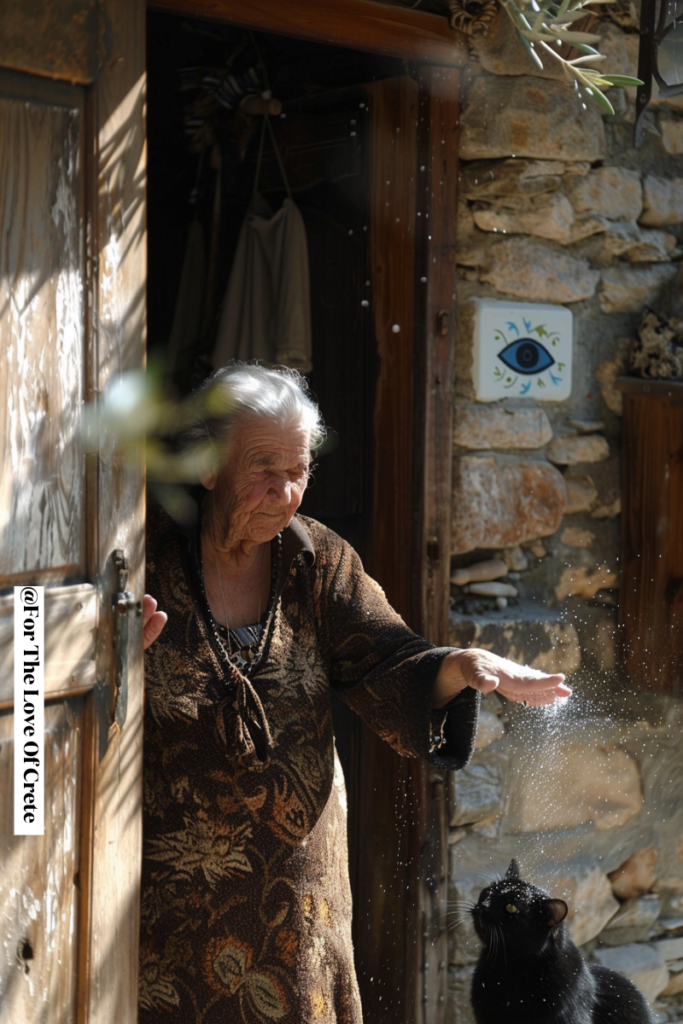
The number 13 itself carries powerful religious significance in Greek culture. It represents the total number of people present at the Last Supper – Jesus and his twelve disciples – with Judas, the thirteenth person, becoming the betrayer. This biblical connection adds another layer of foreboding to an already dreaded day.
The impact of this belief remains visible in modern life:
- Business deals often get postponed
- Travel plans are regularly rescheduled
- Important contracts await another day’s signing
Even in today’s modern business environment, many Cretans carefully plan around these potentially unlucky Tuesdays, demonstrating how ancient Greek superstitions continue to influence contemporary decisions.
5. Kalikantzaroi: The Mischievous Holiday Visitors
Like many Greek folklore traditions, the belief in Kalikantzaroi is widespread throughout Greece and the Balkans, with strong observance in Crete. During the twelve days of Christmas, from December 25th to January 6th, these supernatural troublemakers emerge from their underground lairs to wreak havoc in peaceful homes.
These creatures are described in various ways across Greek folklore. Most accounts portray them as half-human monsters with long, thin limbs, large heads, red eyes, and curved nails, though some descriptions emphasize their weird posture and animal-like features.
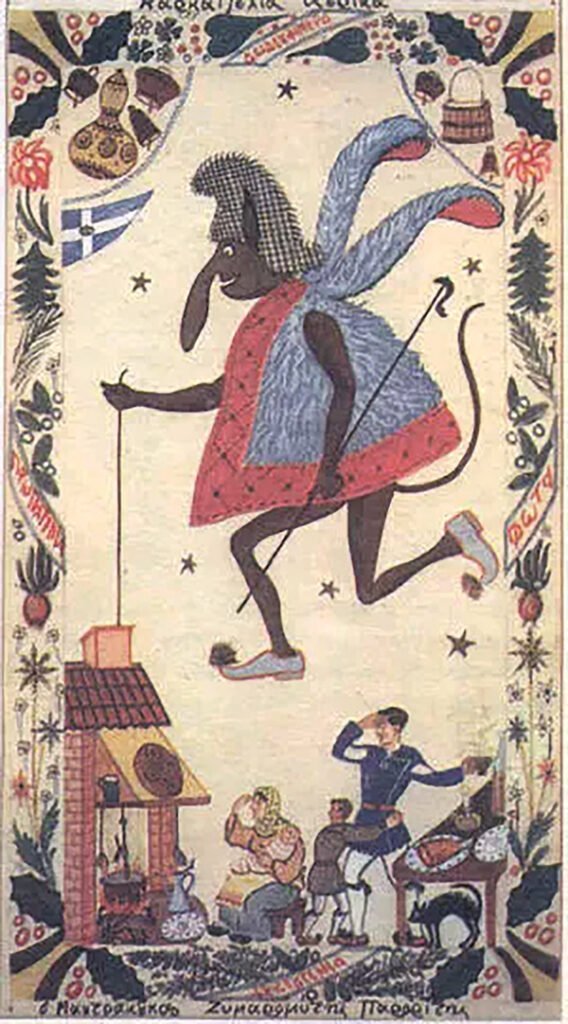
Greeks have developed numerous traditional defenses against these holiday intruders. Common protective measures include:
- Keeping fires burning throughout the twelve days
- Placing colanders outside doors (the creatures spend all night trying to count the holes)
- Hanging garlic or straw around the house
- Burning incense
- Throwing loukoumades (Greek donuts) on the roof to distract them
The Kalikantzaroi’s reign of mischief finally ends on Epiphany (January 6th), when the Blessing of the Waters ceremony takes place. Priests visit homes to sprinkle holy water, cleansing them of these creatures’ influence until the next Christmas season.
6. The Knife-Giving Curse: A Friendship at Stake
The superstition about passing knives is widely observed throughout Greece and many other cultures, including Russian and Western traditions. In Crete, this practical superstition revolves around the simple act of passing knives. Whether in home kitchens or professional tavernas, you’ll notice a careful choreography around knife handling – no one will pass a blade directly from hand to hand.
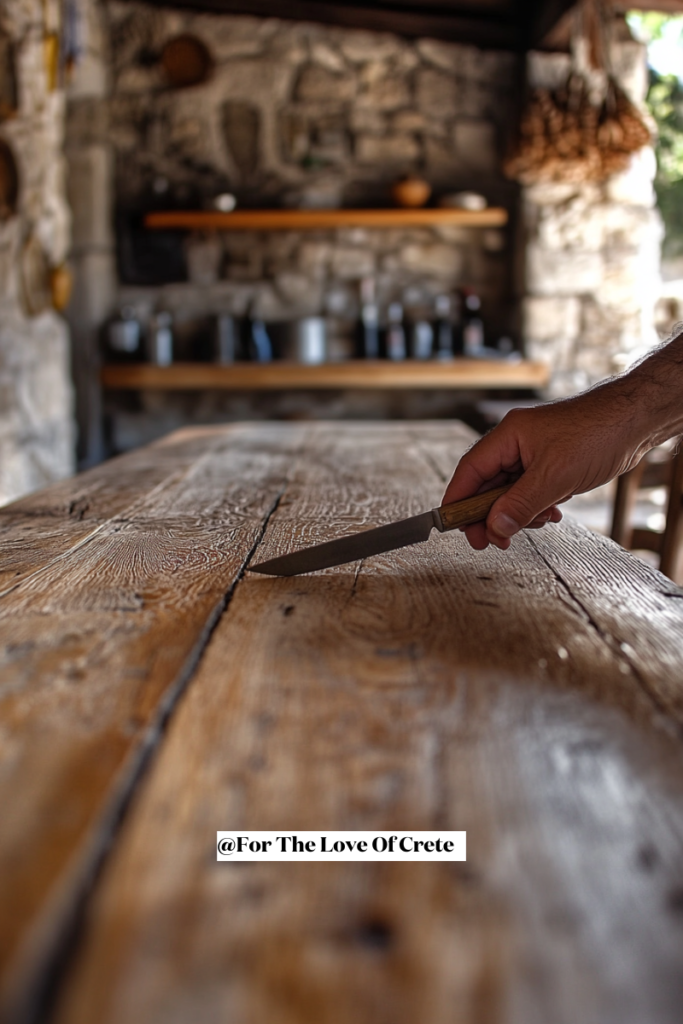
The belief holds that directly handing over a knife will “cut” the relationship between giver and receiver, potentially ending a friendship. Instead, people carefully place knives on counters or tables, allowing others to pick them up. This practice has remained remarkably resilient even in modern households where education has dispelled many other Greek superstitions.
What makes this belief particularly fascinating is its widespread observance across different cultures and social levels. From family kitchens to professional restaurants, this careful knife-passing dance continues to influence daily interactions, preserving both friendships and ancient wisdom.
7. Vasilopita: The Lucky New Year’s Coin
The Vasilopita, a cherished Greek Orthodox tradition also celebrated throughout Crete, transforms a simple cake into a treasure hunt that brings luck to its finder. The name literally means “Basil’s bread/cake,” honoring Saint Basil the Great, who according to tradition, helped his people recover their valuables from unjust taxation.
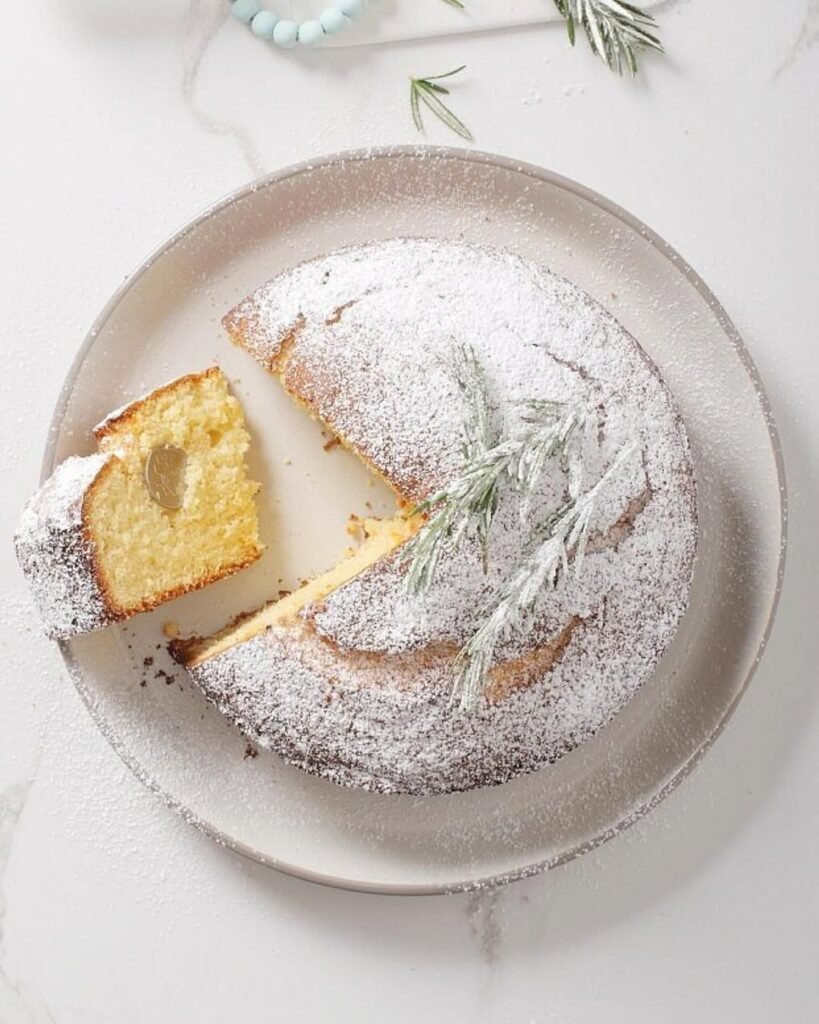
The preparation and serving of this New Year’s cake follows strict traditional protocol. A coin is carefully wrapped in foil and hidden within the aromatic dough, which fills the house with scents of orange zest and mahlab – a spice made from cherry pits that adds a distinctive almond-like flavor. When serving time arrives, typically at midnight on New Year’s Eve or on January 1st (St. Basil’s feast day), the cutting ceremony follows an unbreakable order:
- First piece for Christ
- Second piece for the Theotokos (Virgin Mary)
- Third piece for St. Basil
- Fourth piece for the poor
- Remaining pieces distributed from eldest to youngest family member
Finding the coin is considered a powerful omen of good fortune for the coming year. While many institutions may hold their Vasilopita celebrations between New Year’s Day and the beginning of Great Lent, the heart of this tradition remains unchanged – bringing families together in a moment of shared anticipation and hope for the year ahead.
Conclusion
From bustling city streets to remote mountain villages, these 7 Greek superstitions remain deeply woven into Cretan daily life. They’re not mere relics of the past or tourist attractions, but living traditions that continue to shape modern behavior on Greece’s largest island. Each belief, from the protective Evil Eye charms to the careful passing of knives, reflects the Cretan people’s deep connection to their ancestral wisdom and their commitment to preserving these age-old customs. In a world that increasingly prioritizes speed and efficiency over tradition, these enduring practices serve as a reminder of Crete’s unique cultural heritage and its people’s unwavering dedication to keeping their rich traditions alive.

